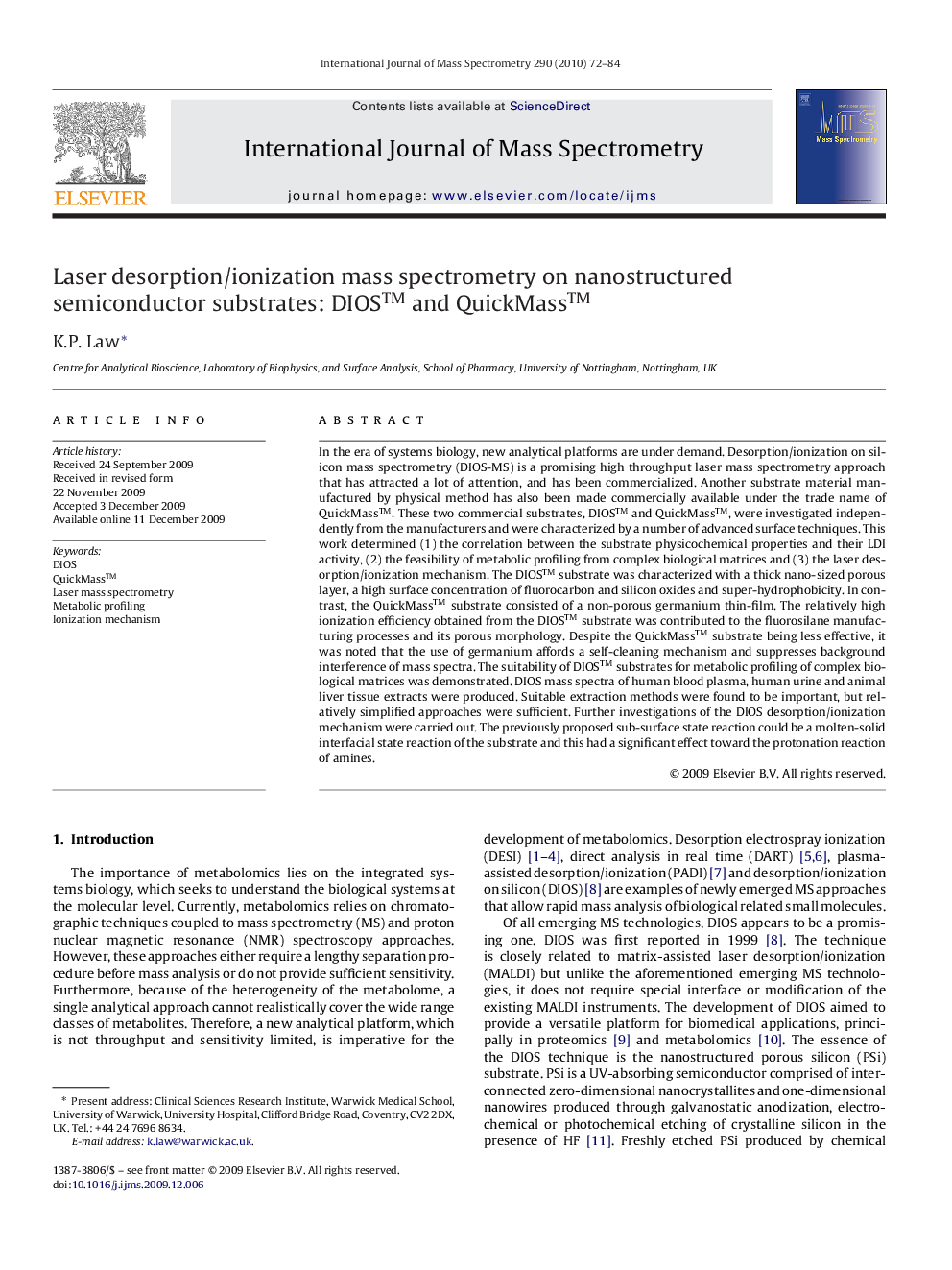| کد مقاله | کد نشریه | سال انتشار | مقاله انگلیسی | نسخه تمام متن |
|---|---|---|---|---|
| 1193126 | 1492330 | 2010 | 13 صفحه PDF | دانلود رایگان |

In the era of systems biology, new analytical platforms are under demand. Desorption/ionization on silicon mass spectrometry (DIOS-MS) is a promising high throughput laser mass spectrometry approach that has attracted a lot of attention, and has been commercialized. Another substrate material manufactured by physical method has also been made commercially available under the trade name of QuickMass™. These two commercial substrates, DIOS™ and QuickMass™, were investigated independently from the manufacturers and were characterized by a number of advanced surface techniques. This work determined (1) the correlation between the substrate physicochemical properties and their LDI activity, (2) the feasibility of metabolic profiling from complex biological matrices and (3) the laser desorption/ionization mechanism. The DIOS™ substrate was characterized with a thick nano-sized porous layer, a high surface concentration of fluorocarbon and silicon oxides and super-hydrophobicity. In contrast, the QuickMass™ substrate consisted of a non-porous germanium thin-film. The relatively high ionization efficiency obtained from the DIOS™ substrate was contributed to the fluorosilane manufacturing processes and its porous morphology. Despite the QuickMass™ substrate being less effective, it was noted that the use of germanium affords a self-cleaning mechanism and suppresses background interference of mass spectra. The suitability of DIOS™ substrates for metabolic profiling of complex biological matrices was demonstrated. DIOS mass spectra of human blood plasma, human urine and animal liver tissue extracts were produced. Suitable extraction methods were found to be important, but relatively simplified approaches were sufficient. Further investigations of the DIOS desorption/ionization mechanism were carried out. The previously proposed sub-surface state reaction could be a molten-solid interfacial state reaction of the substrate and this had a significant effect toward the protonation reaction of amines.
This work investigated the physicochemical properties of the commercial DIOS™ and QuickMass™ targets, their suitability for biological mass spectrometry and the desorption/ionization mechanism.Figure optionsDownload high-quality image (137 K)Download as PowerPoint slide
Journal: International Journal of Mass Spectrometry - Volume 290, Issues 2–3, 15 February 2010, Pages 72–84